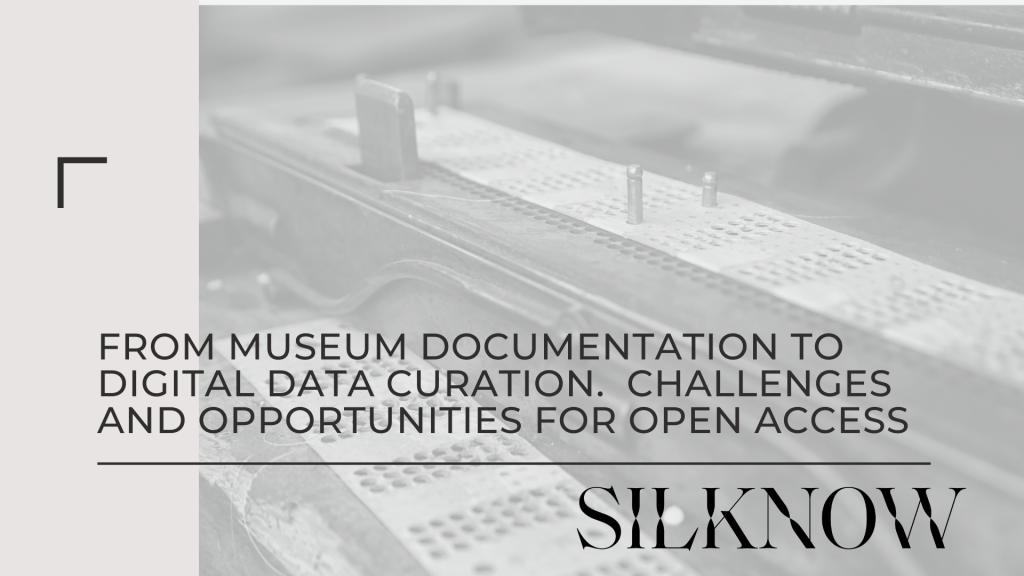
Access to cultural heritage is recognised as a basic human right. Its enjoyment and recognition by the community makes them become its custodians, valuing it as worthy of protection. Despite textiles -and especially silk- play a key role within the history and current life of so many European communities, it is insufficiently recognised as an important kind of cultural heritage, of both tangible and intangible nature. Moreover, its conservation is a very complicated task, given its own physical fragility, and its dispersion in many small institutions.
On the other hand, the digital challenges faced by museums vary greatly, depending on their size, financial and human resources, etc. Small and medium size museums have little access to digital tools and repositories that can allow them to share their data beyond their own walls and websites.
Digital open access and data management is therefore one of the major challenges facing museums. Indeed, a large number of culturally significant historical artefacts have been digitized and made available online. This means that experts in cultural heritage, and often the general public, now have the ability to search for and access information about artifacts instantaneously, even when these are stored in distant parts of the world. However, each institution has its own cataloguing practices, that sometimes change, even within the very same museum. The resulting information can therefore vary greatly. The inherent heterogeneity of these data results in the creation of silos, incompatible with each other, and therefore mutually incomprehensible. Data heterogeneity is further increased by the multiplicity of languages used. This makes the discovery of these data even more difficult, as it requires users to master various languages and very different information management systems, as well as explicit or implicit data models. To begin to overcome these issues, museums need to talk to each other, as they are the first to suffer these problems. SILKNOW provided three workshops as a forum to share, debate and propose best practices that should help many museums that share the same situations.
The resulting guidelines are quite broad, since the extreme heterogeneity of collections, institutions and contexts makes it very difficult to provide more specific advice. However, we are sure that this first step is already a valuable contribution for a number of goals, such as the consolidation of museums in the digital arena, through a widespread adoption of digital open-access policies; the support and training to museum professionals tasked with its cataloguing and dissemination; the recognition of textile heritage, its value and complexities; and the need for its increased protection. National plans or international charters should play an instrumental role in this regard.
Download the best practices here.